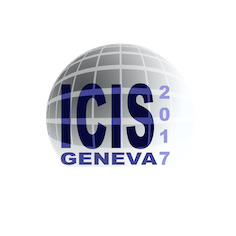Speaker
Description
A new tandem type source on the basis of electron cyclotron resonance (ECR) plasma has been constructing for producing synthesized ion beams in Osaka Univ. [1] Magnetic mirror field configuration with octupole magnets can be controlled to various shape of ECR zones, namely in the second stage plasma to be available by a pair mirror and a supplemental coil. Noteworthy correlations between these magnetic configurations and production of multicharged ions are investigated in detail, as well as their optimum conditions. We have been considered accessibility condition of electromagnetic and electrostatic waves propagating in ECR ion source (ECRIS) plasma, and then investigated their correspondence relationships with production of multicharged ions. It has been clarified that there exits efficient configuration of ECR zones for producing multicharged ion beams, and then has been suggested that new resonance, i.e. upper hybrid resonances, must have occurred [2]. We have been planning new advanced experiments inducing actively these additional effects for enhanced furthermore multicharged ion beams with launching extra-ordinary (X) mode waves. Initially we have already conducted to applying 9 GHz X-mode microwaves to 2.45 GHz ECRIS, and it have been observed enhancements of higher energy tails of electron energy distributions function measured by the probe methods [3]. Next we have been try to similar experiments with 6 GHz X-mode microwaves, and in this paper we will describe the preliminary experimental results.
References
[1] Y. Kato, Y. Kurisu, D. Nozaki, K. Yano, D. Kimura, S. Kumakura, Y. Imai, T. Nishiokada, F. Sato, and T. Iida, Review of Scientific Instruments, 85(2014)02A950-1-3.
[2] Y. Kato, K. Yano, T. Nishiokada, T. Nagaya, D. Kimura, S. Kumakura, Y. Imai, S. Hagino, T. Otsuka, and Fuminobu Sato, 87(2016)02A710-1-4.
[3] T. Nishiokada, T. Nagaya, S. Hagino, T. Otsuka, M. Muramatsu, F. Sato, A. Kitagawa, and Y. Kato, Review of Scientific Instruments, 87(2016)02A714-1-3.




